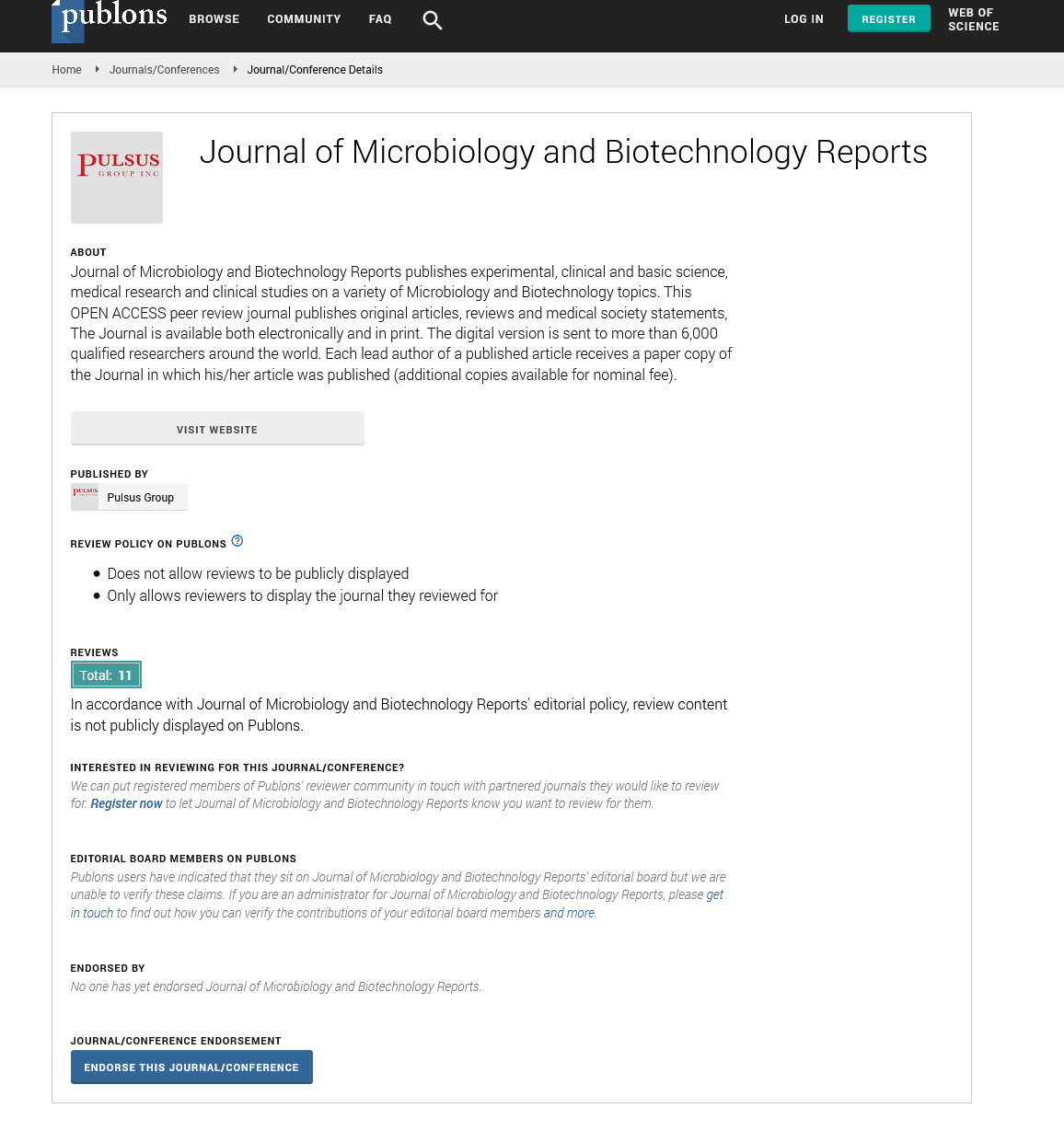Vulvovaginitis in pubescent and prepubescent girls: microbiological results
Received: 01-Mar-2023, Manuscript No. PULJMBR-23- 6299 ; Editor assigned: 03-Mar-2023, Pre QC No. PULJMBR-23- 6299 (PQ); Accepted Date: Mar 20, 2023; Reviewed: 17-Mar-2023 QC No. PULJMBR-23- 6299 (Q); Revised: 20-Mar-2023, Manuscript No. PULJMBR-23- 6299 (R); Published: 23-Mar-2023, DOI: 10.3752/puljmbr.2023.6(2).45
Citation: Smith A. Vulvovaginitis in pubescent and prepubescent girls: Microbiological results. J Mic Bio Rep. 2023;6(2):45.
This open-access article is distributed under the terms of the Creative Commons Attribution Non-Commercial License (CC BY-NC) (http://creativecommons.org/licenses/by-nc/4.0/), which permits reuse, distribution and reproduction of the article, provided that the original work is properly cited and the reuse is restricted to noncommercial purposes. For commercial reuse, contact reprints@pulsus.com
Abstract
In prepubertal and pubertal girls, vulvovaginitis is a common and difficult gynaecological condition. If a vaginal culture is required for additional inquiry into a vaginal infection that is not responding to hygienic measures due to one of the many possible aetiologies, treatment should be customised.
The goal of this study was to look at the pathogens found in prepubertal and pubertal girls who had vulvovaginitis symptoms and signs. Children with vulvovaginitis should use caution while evaluating culture results. Girls in late puberty were more prone to bacterial vaginosis and vulvovaginal candidiasis, whereas opportunistic bacteria of faecal origin were the most prevalent isolated pathogens in prepubertal girls
Keywords
Prepubertal, Vulvovaginitis, Aetiologies
Introduction
The most prevalent and difficult reason for referral to paediatric and adolescent gynaecological services is vulvovaginitis. Microbiological testing can be an important diagnostic tool, but in youngsters, the results should be interpreted with caution. Before puberty, the absence of oestrogens and the vaginal pH, which is often neutral or alkaline with no or few lactobacilli, produce an environment that is conducive to infections. Contrarily, puberty is a crucial stage in the transition from infancy to maturity. As it progresses, lactobacilli grow, and dominate the vaginal microbiota, and the pH shifts from alkaline to acidic. In addition to preserving an acidic vaginal pH, lactobacilli play a significant role in lowering the likelihood of vaginal infections. The patient may be more susceptible to vulvovaginitis if the healthy vaginal environment is disturbed in any way. Sexually transmitted infections must be taken into account and researched when treating pubertal patients since they are more likely to develop infectious vulvovaginitis. The genital tract is susceptible to infection in women due to the proximity of the urethra and anal region to the vagina and because of poor or insufficient local cleanliness. Furthermore, self-inoculation makes it simple for oropharyngeal viruses to enter the vaginal region. If hygienic efforts are unsuccessful in treating the illness, further research is necessary since each patient should receive a customised course of treatment. A crucial method for excluding or identifying microorganisms linked to vulvovaginal infections is microbiological diagnostics, which uses microscopic analysis and cultures of vulvovaginal materials. Therefore, the clinical data and potential risk factors, if any, must be considered before determining the relevance of the pathogens identified from the vaginal cultures. To rule out a urinary tract infection in all participants exhibiting urinary symptoms, urine samples were also taken and evaluated. Finally, a Graham test for pinworms was carried out in the early morning for three days in children with genital pruritus or anal itching. This involved pressing a Sellotape strip on the skin next to the anus, which was then removed and placed onto a slide to be examined for the presence of Enterobius vermicularis ova by microscopy. The SPSS for Windows version 25.0 programme was used for the statistical analysis (SPSS Inc., Chicago, IL, USA). The chi-square test was used to assess categorical variables to compare data between groups. The p-value threshold for statistical significance was established at 0.05.
The results of vaginal cultures should be carefully considered when determining the cause of vulvovaginitis in children, even if they are an important tool for accurately identifying the bacteria at fault. Girls in late puberty were more prone to BV and vulvovaginal candidiasis, whereas opportunistic bacteria of faecal origin were the most prevalent isolated pathogens in prepubertal females. The clinician should arrive at an accurate diagnosis and the best course of treatment by combining a detailed history with a suitable physical examination and a meticulous laboratory evaluation. Nonetheless, symptomatic children of all ages should always get general advice regarding personal hygiene. The most common reason for a referral to paediatric and adolescent gynaecological services is vulvovaginitis, and to protect one’s ability to conceive in the future, awareness of the pathogens frequently accused is crucial.





